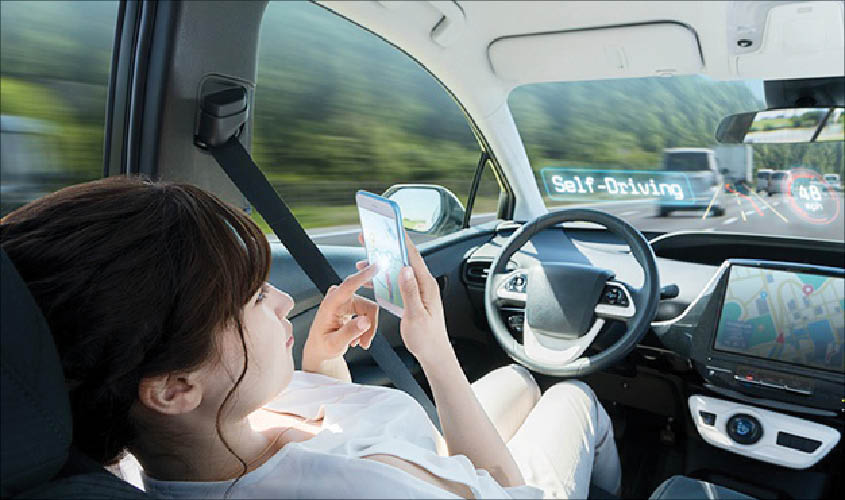Imagine this scenario—it’s a usual weekday, you have to get to work but you do not have to worry about your driver getting late or about traffic. Sounds like a dream, right? Well, that is what self-driving cars could offer in the future.
India is a relatively late entrant in the field of automated driving as compared to more developed economies like the USA that have already embraced the avant-garde technology. Although there are a few speed-bumps along the way, the transportation industry in India has started on its journey towards automation on the back of domestic companies like HCL, Tech Mahindra and Ola. The visionary technology aims to reduce, and eventually eliminate, the need for human intervention in mechanical operations of driving.
The vision is to incorporate a combination of cutting-edge AI-based technologies and algorithms to make the vehicles self-sufficient and independent of any human input. On a scale from zero to five, this vision, however, falls into the highest category, and still seems in the distant future. Presently, Indian startups and companies are attempting to bring Level-1 and Level-2 (as per the SAE standard) automated vehicles into the market.
The following are some of the ways in which the radical self-driving technology can disrupt the Indian transportation industry in the future.
Driverless comfort
Long distance conveyance is exhausting. Especially on the roads that stretch on for miles and miles and have only sparse traffic. In these situations it becomes extremely monotonous for the driver and it gets worse during the night-time ride when they must fight sleep and fatigue to keep the vehicle moving. These situations are especially troublesome for truck drivers who do not even have the novelty of scenery to relieve the exhaustion of the trip. Here, auto-pilot can greatly alleviate the rigidity of their duty by enabling the drivers to leave the repetitive and mechanical exercise solely to the machine. Similarly, by using the high-tech sensors that these vehicles come equipped with, vehicles can easily traverse a busy road by keeping track of the nearby vehicles and other obstacles, and move on a mapped path at a calculated speed while the driver needs to only worry about taking back control only in extreme situations.
Safer streets
The advantages of AI-assisted driving systems are manifold and the drivers are not the only ones who benefit from them. Sensory apparatuses like video cameras, radar sensors, laser scanners etc. feed the central control system into the vehicle with information of the surrounding environment. The data includes all the details that are mostly overlooked by human eyes (like a cyclist or a pothole), and processing this data, the AI can thus manipulate the vehicular operations more effectively. With the element of human error thus eliminated, the possibility of accidents is greatly reduced.
Time-saving technology
As I said earlier, automated systems can chart a map based on data fed into the system by the sensory equipment and the Internet, thereby anticipating and avoiding traffic, congested streets, red lights, or any other obstructive activity that causes traffic jams. In this way, a self-driving vehicle can transport the passenger up and down a calculated path with the aim of moderating travel time. The commute time, now cut down, can be utilised by the driver/passenger in conducting more productive activities.
Green machines
AI-based processing system integrated into the automated vehicle is also capable of moderating the fuel consumption by leveraging least amount of fuel to cover maximum distance possible at a reasonable speed. Also, alternative energy sources can also be combined with self-driving technology, such as low-cost battery, shared vehicles usage technologies, and fuel cell vehicle technology to address the clean energy problem.
While the visionary technology of automation holds interesting possibilities, the road to achieving it is ridden with potholes. One of the major concerns surrounding the issue of automation of vehicles pertains to the issue of safety. As AI is still a nascent stage technology, it has certain shortcomings that need to be addressed and resolved.
Finally, a major roadblock faced by the advance of this technology in India is the lack of appropriate infrastructure in the county. However, the merits of self-driving technology far outweigh its challenges. Therefore, the adoption of this cutting-edge technology in India, rather than being a matter of possibility, is only a matter of time.
The author is managing director, Udacity India, a Silicon Valley-based online learning platform

